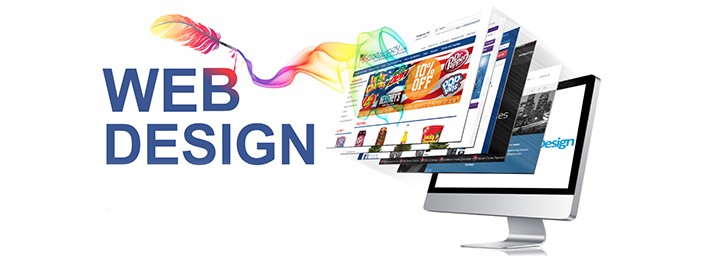How 3D Animation Improves STEM Education Materials
3D animation has transformed STEM education by making complex concepts accessible, engaging, and memorable.

In the rapidly evolving landscape of education, STEM (Science, Technology, Engineering, and Mathematics) fields are critical for preparing students to tackle the challenges of the modern world. Traditional teaching methods, while valuable, often struggle to engage students with complex concepts and abstract ideas. This is where 3D animation steps in, revolutionizing STEM education by transforming intricate theories into visually compelling and easily understandable materials.
The Role of 3D Animation in Education
3D animation services play a pivotal role in enhancing the quality and accessibility of STEM education materials. By creating dynamic, interactive, and engaging visual content, educators can better convey abstract scientific phenomena, intricate engineering designs, and mathematical concepts that might otherwise be difficult to grasp. For instance, a physics lesson on Newton’s laws can be brought to life through animations that visually depict forces acting on objects, their motions, and the resulting outcomes.
Advantages of 3D Animation in STEM Education
1. Enhancing Conceptual Understanding
Many STEM topics involve abstract concepts that are challenging to understand through static images or textual explanations alone. For example:
-
In biology, understanding molecular structures, DNA replication, or the workings of the human body becomes easier with animated 3D visualizations.
-
In chemistry, animations can demonstrate chemical reactions at the molecular level, showcasing interactions between atoms and molecules in real-time.
-
In mathematics, 3D animations can represent multi-dimensional graphs, making abstract algebra and calculus concepts more tangible.
With 3D animation, students gain a deeper and more intuitive understanding of these concepts, bridging the gap between theoretical knowledge and real-world applications.
2. Interactive and Immersive Learning
Interactivity is a cornerstone of effective learning. With advancements in 3D animation services, STEM education materials can now include interactive simulations that allow students to explore and experiment in a virtual environment. For example:
-
Engineering students can virtually assemble and disassemble complex machinery.
-
Physics students can manipulate variables such as gravity or friction in a simulation to observe outcomes.
-
Environmental science learners can simulate ecosystems to understand the impact of various factors on biodiversity.
These immersive experiences not only make learning more engaging but also cater to different learning styles, ensuring that every student can grasp challenging concepts effectively.
3. Improving Retention and Recall
Research shows that humans retain visual information more effectively than text or speech. 3D animations, with their vibrant and dynamic presentations, capture attention and leave a lasting impression. By presenting information in a memorable way, these animations improve students’ ability to recall and apply knowledge in practical scenarios.
For example, an explainer video agency specializing in educational content can craft visually stunning animations for STEM lessons, ensuring that students remember core concepts during exams and real-world applications.
4. Fostering Engagement and Motivation
Traditional textbooks and lectures often fail to sustain students’ attention. In contrast, 3D animations provide a captivating medium that draws learners into the subject matter. By making learning fun and visually stimulating, these animations encourage students to actively participate in their education.
Moreover, gamified elements, such as animated quizzes or problem-solving challenges, can further enhance motivation, ensuring that students remain committed to mastering STEM subjects.
Applications of 3D Animation in STEM Fields
1. Science
In disciplines like physics, biology, and chemistry, 3D animation brings theories and processes to life. For instance:
-
Animations of celestial bodies and gravitational forces help students grasp astronomy concepts.
-
Biology lessons on cell division or organ functions become more accessible with detailed visualizations.
-
Chemical reaction mechanisms can be vividly demonstrated, enhancing understanding of reaction kinetics.
2. Technology and Engineering
Engineering and technology education often involves intricate designs and systems that are difficult to visualize in two dimensions. 3D animation enables:
-
Virtual prototyping, where students can design, test, and refine models without physical resources.
-
Detailed demonstrations of engineering principles, such as fluid dynamics or thermodynamics.
-
Realistic simulations of technological systems, from circuit designs to artificial intelligence algorithms.
3. Mathematics
Mathematical concepts, especially in advanced fields like calculus and linear algebra, are often abstract and difficult to visualize. Through 3D animation:
-
Complex equations and models can be represented as interactive graphs.
-
Geometric theorems can be dynamically illustrated, showing transformations and relationships.
-
Statistical data can be animated to reveal patterns and trends over time.
Collaboration with Professional Animation Studios
Creating high-quality 3D animations for STEM education requires expertise and creativity. Collaborating with the largest animation studios or a specialized explainer video agency ensures that educational content meets the highest standards of accuracy and engagement.
Professional studios bring advanced tools and talented animators to the table, crafting visually stunning animations tailored to educational needs. From developing storyboards to final rendering, these experts ensure that animations are not only informative but also captivating for students.
Case Studies: Real-World Impact
-
Medical Training
Medical schools have integrated 3D animation to teach anatomy and surgical procedures. By visualizing organs and tissues in three dimensions, students can practice and refine their skills in a virtual environment, reducing the need for cadavers and live patients.
-
Environmental Awareness
3D animations have been used to simulate climate change effects, educating students about global warming, deforestation, and pollution. These animations highlight the urgency of sustainable practices, inspiring young minds to become environmental stewards.
-
Robotics and AI
Engineering programs utilize 3D animation to teach robotics and artificial intelligence. Virtual robots and algorithms can be designed, tested, and refined, preparing students for careers in cutting-edge technological fields.
The Future of 3D Animation in STEM Education
As technology continues to evolve, the potential of 3D animation in STEM education is boundless. Innovations such as augmented reality (AR) and virtual reality (VR) are already being integrated into classrooms, offering even more immersive learning experiences. These advancements will enable students to:
-
Walk through a simulated human heart.
-
Experience physics principles in a zero-gravity environment.
-
Collaborate in virtual laboratories with peers worldwide.
By investing in 3D animation services and collaborating with the largest animation studios, educators and institutions can ensure that STEM education materials remain at the forefront of innovation.
Conclusion
3D animation has transformed STEM education by making complex concepts accessible, engaging, and memorable. From enhancing conceptual understanding to fostering motivation and retention, the benefits are undeniable. As the demand for high-quality educational content grows, partnering with an explainer video agency or the largest animation studios can help educators deliver exceptional learning experiences. By embracing this revolutionary technology, we can inspire the next generation of scientists, engineers, and innovators to tackle the challenges of tomorrow with confidence and creativity.
What's Your Reaction?



















